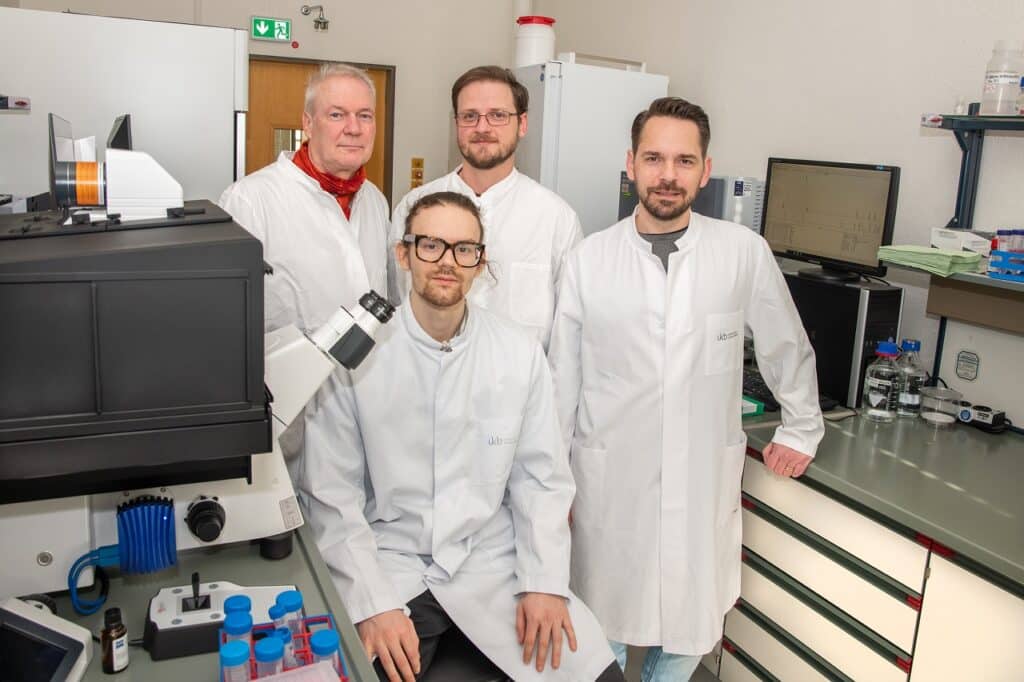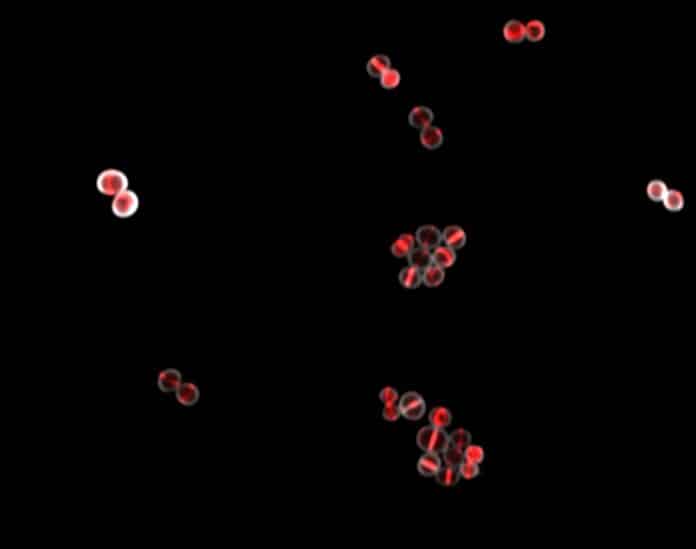Many important antibiotics target bacterial cell wall production. The growing problem of antibiotic resistance requires innovation in the research and development process. However, scientists still have limited knowledge of how even clinically successful antibiotics kill bacteria.
A better understanding of the cellular events that precede and contribute to cell death certainly helps to develop anti-infective therapies. Peptidoglycan synthesis (PGS) is the primary mechanism for forming the bacterial cell wall.
Researchers from the University Hospital Bonn (UKB) and the University of Bonn utilized high-performance microscopes to study the effect of different medications on Staphylococcus aureus cell division.
They discovered that the production of peptidoglycan, a major component of the bacterial cell wall, is the driving force for the whole cell division process and that various antibiotics block cell division in just a few minutes. Within a few minutes, they discovered how different antibiotics block cell division.
The bacterial cell wall keeps unicellular organisms in shape and integrity, and cell wall synthesis is essential for bacterial growth.
The cell division protein FtsZ produces the so-called Z-ring in the center of the cell, beginning the division process. A new cell wall is generated there, with peptidoglycan as the primary component. As a result of this constriction, two identical daughter cells are formed.
The model organism was chosen for investigation by the UKB research team led by Fabian Grein and Tanja Schneider and the team led by Ulrich Kubitscheck, Professor of Biophysical Chemistry. The study focused on the influence of antibiotics that inhibit peptidoglycan synthesis on cell division.
Jan-Samuel Puls, a Ph.D. student at the Institute of Pharmaceutical Microbiology at UKB, said, “We found a rapid and strong effect of oxacillin and the glycopeptide antibiotics vancomycin and telavancin on cell division. The cell division protein FtsZ served as a marker here, and we monitored it.”
FtsZ was fluorescently labeled alongside other proteins for this reason. The researchers next utilized super-resolution microscopy to examine the effects on individual living bacterial cells over time.

They developed an automated image analysis system for microscope images, allowing them to analyze all cells in the sample under study quickly. Dr. Fabian Grein is a scientist at the German Center for Infection Research and a junior research group leader at the UKB’s Institute of Pharmaceutical Microbiology. (DZIF), explain, “Staphylococcus aureus has a diameter of roughly one micrometer or one-thousandth of a millimeter. This makes microscopy particularly difficult.”
The researchers from Bonn discovered that the formation of peptidoglycan is the driving force during the entire process of cell division. That inhibition of cell wall assembly by glycopeptide antibiotics in Staphylococcus aureus occurs quickly and dramatically. They also discovered the specific role of essential penicillin-binding protein 2 (PBP2), which connects cell wall components in cell division. The β-lactam antibiotic oxacillin prevents this protein from being properly localized.
Grein says, “This means that PBP2 does not get to the place where it is needed. As a result, the cell can’t divide. Importantly, this all happens immediately after the antibiotics are added. So the first cellular effects, which have not been studied very intensively so far, are crucial.”
Because of the alarming increase in antibiotic resistance worldwide, he hopes the study results will provide a better understanding of how exactly these agents work at the cellular level and thus a key to developing new antibiotics.
The results of this study will help develop new antibiotics by providing a better knowledge of how these medicines work at the cellular level.
Journal Reference:
- Jan-Samuel Puls, Tanja Schneider, etal. Inhibition of peptidoglycan synthesis is sufficient for the total arrest of staphylococcal cell division. Science Advances. DOI: 10.1126/sciadv.ade9023
